DEAR FRIENDS. IF YOU LIKE THIS TYPE OF CONTENT, SUPPORT SOUTHFRONT WORK:
PayPal: southfront@internet.ru
Donation alerts: https://donationalerts.com/r/southfront
Gumroad: https://gumroad.com/southfront
Or via: http://southfront.org/donate/ or via: https://www.patreon.com/southfront,
BTC: 3Gbs4rjcVUtQd8p3CiFUCxPLZwRqurezRZ,
BCH ABC: qpf2cphc5dkuclkqur7lhj2yuqq9pk3hmukle77vhq,
ETH: 0x9f4cda013e354b8fc285bf4b9a60460cee7f7ea9
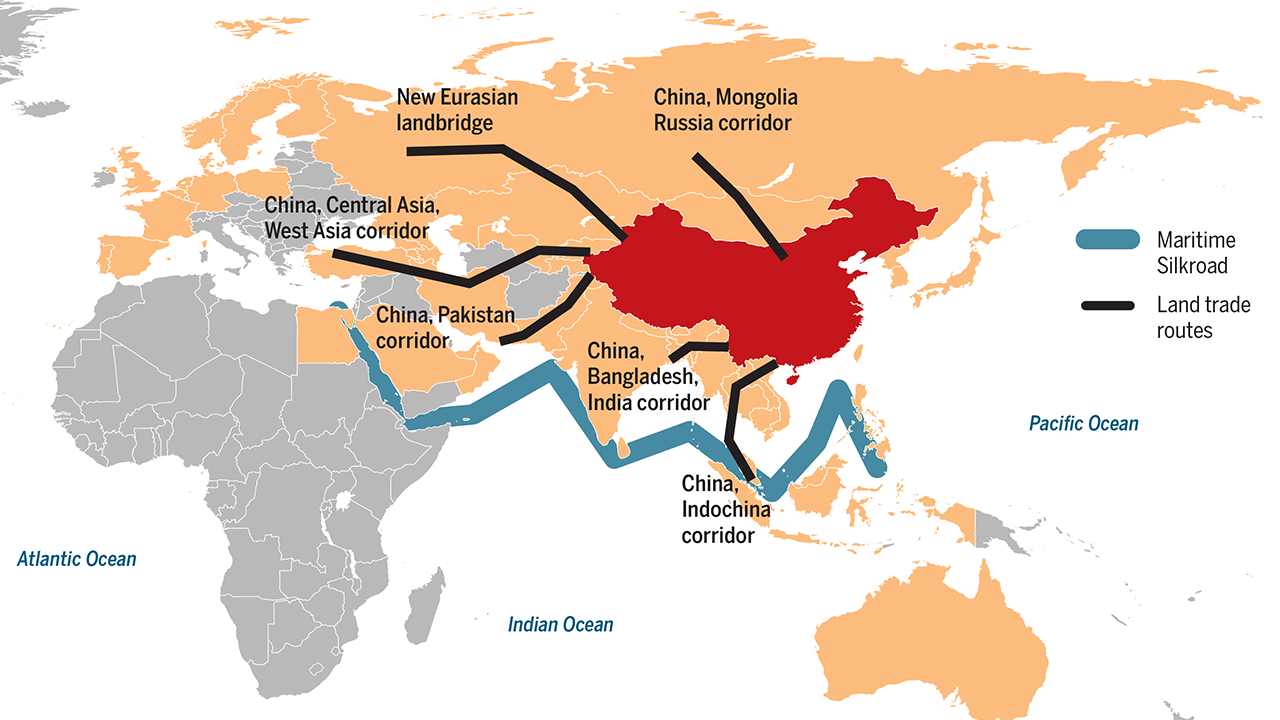
The bilateral relationship is evolving within a broader long term strategic vision for regional and continental cooperation and integration
Relations between Russia and China have gone from strength to strength over the last 10 years. This development is not exclusively due to the increasingly hostile attitude of Western countries, and the US in particularly, to Russia and China, but it has certainly been a major contributing factor. The deepening and diversification of their strategic relationship is apparent in all spheres, but is particularly notable in their economic and military relations.
There are many factors underpinning the expansion and diversification of trade relations and other forms of economic cooperation between Russia and China. The most important ones include the imposition of sanctions on Russia by Western countries in 2014, the economic stagnation that has characterized most European countries for much of the last 10 years while the Chinese economy has continued to grow, symmetry in economic characteristics of both countries (surpluses in one and corresponding shortages in the other in a variety of sectors), US pressure bringing both countries closer together geo-strategically (which has also produced a mutual interest in shifting away from the US dollar in all transactions), and the consolidation and harmonization of the Chinese ‘One Road One Belt’ initiative and the Eurasian Economic Union
After a relatively flat period marked by what could be characterized as benign indifference and neglect, the trade relationship between Russia and China has grown rapidly since 2009 in terms of both imports and exports, although there was a sharp decline during 2014-2015 corresponding to a sharp decline in Russia’s overall GDP and trade volumes.
However, at least as importantly, the growth in trade and other forms of economic cooperation has not just been quantitative but also qualitative, as the governments of both countries have elaborated detailed industrial development strategies and plans over long periods which have channelled both public and private sector investment and production into priority areas.
This is in sharp contrast to the peculiar form of haphazard, opportunistic and hyper-militarized disaster capitalism that has reigned in the US for many years – arguably at least since the 1990s, when US companies began dismantling the US industrial capacity and offshoring production en masse to raise corporate profits, and the US Congress began to dismantle the anti-trust and financial regulatory frameworks that had been established during the Great Depression of the 1930s to limit the volatility and excesses of the financial sector. (It is also approximately the same period that the US began its post Cold War military adventurism in earnest.)
Most recently the Trump administration’s ambitious infrastructure investment fund (which appeared to be yet another corporate and political slush fund to a considerable extent, to be divided amongst political and corporate allies and withheld from opponents or intransigents) to modernize the US’ aging infrastructure never materialized, and the attempt to establish something resembling a coherent industrial policy complemented by a set of tariffs on selected imports to stimulate domestic production degenerated into an ad hoc series of punitive tariffs and charges whose main objective seemed to be to punish China for the US’ own economic and industrial failures.
The only thing the Republicans and Democrats have been able to agree on in recent times, apart from increasing the already astronomical level of military spending, was to establish another disaster capitalism multi-trillion dollar bailout fund (for the Coronavirus this time) for the financial and corporate sectors, which have increasingly fallen under the control of a very limited number of investment funds led by Vanguard and Black Rock.
In contrast, China’s long-running practice of elaborating and updating five year strategic economic development plans which are implemented by a combination of State-owned and private sector enterprises has proven to be a success. After a catastrophic period of experimentation with disaster capitalism under Boris Yeltsin, Russia has also adopted the strategy of developing a hybrid (or ‘mixed’) economy with substantial State and private sector involvement within the overall framework of strategic planning and industrial policies elaborated by the State in accordance with crucial national interests and objectives.
The underlying similarity in approaches and objectives – albeit obscured somewhat by China’s continued strong commitment to communism and Russia’s strong renunciation of the same – has provided a solid basis for both countries’ renewed interest in strengthening bilateral relations and cooperation in all spheres.
While the leadership of both countries have sought to develop and promote a wide range of bilateral trade, investment and R & D projects both by State entities as well as by the private sector, due to their vast scale the bilateral agreements and projects in the energy sector overshadow all others.
This should not however obscure the importance of cooperation in other sectors and the extent to which the different manifestations and forms of cooperation have continued to proliferate. Most Western analysts emphasize the excellent ties that have developed in terms of military cooperation, involving everything from basic R & D of new technologies and weapons systems to military training and exercises, but the bilateral cooperation goes far beyond these high profile sectors to include education, scientific and technical research, agriculture, manufacturing and services more generally.
Macroeconomic Data on the Russian Economy
To contextualize the changes that have taken place in the bilateral economic relations between Russia and China, they are placed against the background of economic developments in Russia more generally. As noted above, Russia’s economy has generally experienced solid if not spectacular growth since the disastrous decade of the 1990s, and although it was significantly impacted by the West’s sanctions imposed in 2014 (as well as by the fall in oil prices that ocurred around the same time) the economy soon stabilized and then recovered quantitative losses on an even more solid fundamental basis given the economy’s increased diversification, self-sufficiency and resistance to external shocks.
Overall Russia has performed at least as well as most Western countries since 2000, though of course China’s economic growth has far exceeded them.
China’s impressive economic growth therefore could explain the steady trend of increasing trade between the two neighbours by and of itself, however as mentioned above bilateral relations have been boosted by external factors (Western hostility and sanctions) and also nurtured and guided by internal factors (strategic economic and industrial planning based on compatible national priorities and objectives, augmented by significant levels of direct State participation in key economic sectors).
Imports and Exports
The growing economic importance of China to Russia has largely been at the expense of Europe, in part due to the imposition of sanctions against Russia but also a natural consequence of China’s continued economic growth and Europe’s economic stagnation, as well as the complementarity that exists between the Russian and Chinese economies, sectors of comparative advantage and resource endowments.
The share of the 28 European Union countries in Russian exports dropped from 52% in 2014 to 45% in 2017, and the corresponding shares in Russian imports fell from 41% to 38%. Over the same period, the share of China in Russian exports increased from 7.5% to 12%, and in imports from 11.5% to 21%. Nonetheless, as of 2017 Russian imports from China (EUR 48bn) remained about half the value of imports from the European Union (EUR 87bn). Thus although trade reorientation away from the West and towards China is steadily increasing, Europe remains an integral trade partner for Russia.
The figures for 2019 were very similar. The top 10 sources of imports were:
China 21% (54 billion US$), Germany 10.1% (25 billion US$), Belarus 5.52% (13.6 billion US$), USA 5.43% (13.4 billion US$), Italy 4.41% (10.9 billion US$), Japan 3.62% (8.96 billion US$), France 3.47% (8.59 billion US$), Korea 3.23% (8 billion US$), Kazakhstan 2.31% (5.71 billion US$), Turkey 2.01% (4.97 billion US$).
The top 10 export destinations for Russian exports in 2019 were:
China 13.4% (57 billion US$), Netherlands 10.4% (44 billion US$), Germany 6.57% (28 billion US$), Belarus 5.08% (21 billion US$), Turkey 4.95% (21 billion US$), Korea 3.83% (16.3 billion US$), Italy 3.36% (14.3 billion US$), Kazakhstan 3.34% (14.2 billion US$), United Kingdom 3.11% (13.2 billion US$), USA 3.09% (13.1 billion US$). Source
The continued importance of Europe to Russia’s economy is particularly evident when the analysis goes beyond the level of trade volumes, to a consideration of the evolution of trade structures by sector, particularly in the case of Russia’s imports. Whereas Russian exports are dominated by mineral fuels in both directions (accounting for more than 76% of exports to the EU and 64% of exports to China), there are important differences in the structure of Russian imports from the EU and China.
“This reflects the fact that, in certain areas, Russia still needs products and equipment that it can only obtain from Western sources. For example, whereas the HS84 category (nuclear reactors, boilers, machinery and mechanical equipment) represents the largest import item from both the EU and China (with shares in total Russian imports of 23% and 28% in 2017, respectively), the second and third most important categories of imports from the EU: HS87 (vehicles, 11% of Russian imports) and HS30 (pharmaceuticals, 9%) are still largely absent in imports from China…
Nevertheless, import structures are also converging: between 2014 and 2017 these structural ‘import gaps’ were substantially reduced – most spectacularly in the above mentioned three largest import items. The structure of Russian imports from China is also becoming more sophisticated: the shares of machinery and electrical equipment are already higher than the corresponding shares in imports from the EU. As the EU-China import gap closes for Russia, one can conclude that China is gradually replacing the EU as an import source, even with respect to structural developments (although there remain gaps at more detailed commodity levels).” LINK
Key Sectors and Major Projects
The negotiation and execution of structural agreements and operational projects and transactions has taken place within the framework of existing strategic planning elements so as to maximize their compatibility with existing projects and activities and contribution to the realization of national priorities and interests. Although Russia’s efforts to increase economic diversification and self-sufficiency in key sectors received a great boost from the imposition of sanctions in 2014, it had already taken substantial steps in this regard. For instance, a ‘food security doctrine’ has been official government policy since 2010, and the doctrine has been a key element of subsequent government programs for the development of the agriculture and fisheries sectors and the regulation of agri-food markets during the period 2013-2020. LINK
In the same way, ambitious infrastructure projects announced in the framework of developing bilateral relations – such as the Moscow-Kazan high speed railway, which will eventually be part of a high speed rail network linking China (and probably even southeast Asia) to Europe – are being laid out within the framework of a broader Russian strategy to overhaul and upgrade infrastructure throughout the country. In April 2019 the Moscow Times reported:
“The Russian government is pursuing a 6.3 trillion ruble ($96 billion) six-year modernization plan to revamp the country’s highways, airports, railways, ports and other transport infrastructure through 2024.
The comprehensive plan is geared toward improving the connectivity of Russian regions, as well as developing strategic routes including the Europe-Western China transport corridor and the Northern Sea Route.
The plan stems from President Vladimir Putin’s ambitious domestic goals outlined after his inauguration last May. Under a presidential decree, a 3.5 trillion ruble investment fund was set up last summer to finance around 170 construction and other projects from 2019 to 2024.”
Of course, both the general plan and specific details have been subject to scepticism by some experts:
“Bloomberg columnist Leonid Bershidsky has argued that the infrastructure plan risks neglecting underdeveloped regions the Kremlin sees as a “social liability.” Economists interviewed by The Christian Science Monitor have said the revitalization plans are geared toward boosting the export potential of big business and are ill-equipped toward future economic development.” LINK
Nonetheless, at least Russia is committed to thinking and acting strategically with the intention of improving the country’s stock of assets and capabilities, and early indications are that most of the projects have been thoroughly evaluated for current and future economic and social utility and that implementation is progressing steadily. What would the detractors of Russia’s efforts in this respect make of the non-existent efforts of the ruling classes in the US to undertake a similar national infrastructure modernization project?
Early on in the preparations for a massive expansion in bilateral ties the underlying financial infrastructure was laid.
Although still heavily reliant on the US dollar for all bilateral transactions at the time, by 2014 around 100 Russian commercial banks were already offering corresponding accounts for settlements in yuan, and in some ordinary depositors could also open an account in yuan. On November 18 Sberbank became the first Russian bank to begin financing letters of credit in Chinese yuan.
The settlement in national currencies between China and Russia in bilateral trade amounted to about 2% in 2013. However, the use of the yuan in mutual settlements between China and Russia increased ninefold in annual terms between January and September 2014, according to the Chinese Ministry of Economic Development, and has continued to rise. LINK
The financial basis for greatly expanded relations has continued to evolve in accordance with progress in other areas.
Thus, in 2015 Sberbank – Russia’s biggest lender – signed a facility agreement with China’s Development Bank to the amount of $966 million.
The goal of the agreement is to develop the “long-term cooperation between Sberbank and China Development Bank in the area of financing foreign trade operations between Russia and China.”
Russia’s state-owned VTB Bank and the Export-Import Bank of China also signed a $483.2 million loan facility agreement to finance trading operations between Russia and China.
The financial architecture has been further consolidated by broader regional frameworks and agreements for mutually beneficial cooperation.
In 2015, Russian President Vladimir Putin and Chinese leader Xi Jinping signed a decree to formalize cooperation in linking the development of the Eurasian Economic Union with the “Silk Road” economic project. The Silk Road project is aimed at connecting China with European and Middle Eastern markets.
“The integration of the Eurasian Economic Union and Silk Road projects means reaching a new level of partnership and actually implies a common economic space on the continent,” Putin said after the meeting with his Chinese counterpart.
Also in 2015, China pledged to invest $5.8 billion in the construction of the Moscow-Kazan High Speed Railway. The railway will be extended to China, connecting the two countries through Kazakhstan. The total cost of the Moscow-Kazan high speed railroad project is $21.4 billion.
An agreement was signed to create a leasing company which will promote the sale of the Russian Sukhoi Superjet-100 passenger planes to the Chinese and South-East Asian markets, and the two countries agreed to develop a new heavy helicopter, called the Advanced Heavy Lift. LINK
The broadening of economic relations spearheaded by high profile State-led industrial projects is underpinned by a range of other initiatives. For example, in September 2018 Russian and Chinese businesses agreed to further develop trade and economic cooperation and increase mutual investments at the Eastern Economic Forum in Vladivostok.
According to a statement from the Russian Direct Investment Fund (RDIF), the sides are considering 73 investment projects worth more than $100 billion in total. The group overseeing the investments is the Russian-Chinese Business Advisory Committee, which includes more than 150 representatives from “leading Russian and Chinese companies.” RDIF said that seven projects worth a total of $4.6 billion have already been implemented as a result of the group’s activities.
The Russia-China Investment Fund was established in 2012 by China’s state-owned China Investment Corporation and RDIF to focus on projects that foster economic cooperation between Moscow and Beijing. LINK
The largest joint project that has been developed is the massive Power of Siberia gas project. In 2014 Gazprom and the China National Petroleum Corporation (CNPC) signed a $400 billion, 30-year framework agreement to deliver 38 billion cubic meters of Russian gas to China annually. According to Russian energy major Gazprom, 119 operational gas wells had been completed by 2017 at the Chayandinskoye field in Yakutia, and the 3,000km of pipelines from Yakutia to the Russian-Chinese border, connected to the Chinese grid via a two-thread underwater crossing of the pipeline across the Amur River, started deliveries as scheduled late in 2019. The deal on the ‘Eastern Route’ took more than a decade to negotiate.
While Western experts are trying to downplay the merits and prospects for the Power of Siberia project – and the bilateral strategic relationship more generally – the project started supplying gas on schedule and at this stage it appears that the claims of the detractors consist of logistical and operational challenges that the Russians have ample experience in confronting or are largely wishful thinking (the terrain is very inhospitable and operating costs and risks are therefore very high, the project will crowd out smaller producers, Russia is locking itself into an arrangement that eliminates other opportunities, Chinese market power means Russia will have to accept unfavourable conditions, the Asian giant will inevitably swallow up its northern neighbour, bilateral relations are founded on a ‘marriage of convenience’, etc.). LINK
As the US has continued to intensify its hostility and associated geopolitical and economic pressure on China and Russia, the two countries have continued to expand their military cooperation as well as a strong high-tech partnership spanning telecommunications, artificial intelligence and robotics, biotechnology and the digital economy based on the exploitation of existing and potential synergies.
The deepening of the bilateral relationship includes more dialogue and exchanges of information, increased academic cooperation and the development of joint industrial science and technology parks. In addition, Russian President Vladimir Putin said Russia would help the Chinese build their own missile early-warning system – a technology that only Russia and the U.S. have successfully implemented so far. LINK
Conclusion
The crucial role of strategic economic and industrial planning and direct State participation in key sectors has been emphasized throughout this report. This is not to suggest that such planning and participation has been perfect; of course, significant errors have been made in both planning and execution, unforeseeable external shocks or factors that could have been predicted but were not taken into account have disrupted progress, as in all other countries.
One area of particular concern is the adverse material impact and effect on morale caused by corruption, which continues to plague both State and private sectors suggesting that the systems of accounting and accountability applying to both require further improvement in both design and implementation. Also, it is arguable that the vision of public forms of economic ownership and participation remains somewhat limited to a strict State/ private company dichotomy and to elitist management structures and procedures within each.
One aspect of this is that more forms of State participation could be considered at the regional and local levels; another is in terms of inclusion of the workforce of each enterprise in the planning, management and accountability structures and decisions of existing State-owned enterprises.
Beyond this, there may be scope for the promotion of other forms of organization, such as producer, professional or community-based cooperatives and collectives that can provide an organizational basis for economic projects and activities in a manner that can incorporate other values and objectives beyond the profit motive.
The basic data for foreign capital flows also suggest a major structural defect which is inherent to the ‘actual existing’ international economy: a vastly disproportionate amount of capital arrives from and departs for small countries that have no clear trade significance or investment capacity of their own, meaning that such capital flows are routed via these jurisdictions either to avoid taxes and other regulations or to deliberately obscure the identity of the owners and beneficiaries of the resources involved.
According to UNCTAD, between 30% and 50% of all ‘foreign direct investment’ worldwide passes through “conduit” countries, making it hard to determine the source.
According to data from the Central Bank of Russia for 2017, Russia receives 36.8% of ‘foreign direct investment’ (or more accurately, international capital flows) from Cyprus, 5.8% from the Bahamas, 7.2% from Bermuda, 0.8% from China, 3.4% from France, 4.1% from Germany, 0.5% from Japan, 0.4% from Korea, 4.4% from Luxembourg, 9.2% from Netherlands, 3.7% from Singapore, 2.9% from Switzerland, 4.2% from the UK, 0.7% from the US and 0.8% from the Ukraine.
According to estimates compiled by UNCTAD, approximately 6.5% of Russia’s ‘FDI’ stock — about $28.7 billion worth based on 2017 data — was actually of Russian origin. The UNCTAD estimates also showed a significantly increased amount of European and US investment. According to the estimates produced, the US is actually the biggest foreign investor in the Russian economy, worth about $39.2 billion.
While such features of international capital flows can be useful to, for example, elude punitive sanctions from hostile states, they greatly restrict efforts to reduce corruption and improve planning and accountability. The Russian government is no doubt well aware of both the potential advantages as well as the drawbacks involved. For example, Bloomberg reported last year:
“For Russia, meanwhile, repatriating the capital that’s recorded as foreign but isn’t remains an important policy goal. In the 2019 World Investment Report, Unctad attributes the 2018 drop in Russia’s investment inflows to the government’s effort to get Russian business owners to redomicile their holdings to the home country.” LINK
While some aspects and consequences of this inimical structural feature of the international economy have been addressed, it remains a major challenge not just for Russia but everywhere.
Overall, however, the available macro-economic data and preliminary results of major joint projects between Russia and China suggest that their approach has been successful as the Russian economy has withstood the external shocks of sanctions imposed by major trading partners as well as large falls in oil and gas prices, and continued on the path of diversification, deepening and constant improvement of existing production capacities to ensure a core level of resilience and self-sufficiency without going to the other extreme of going xenophobic and renouncing foreign trade and cooperation.
MORE ON THE TOPIC:




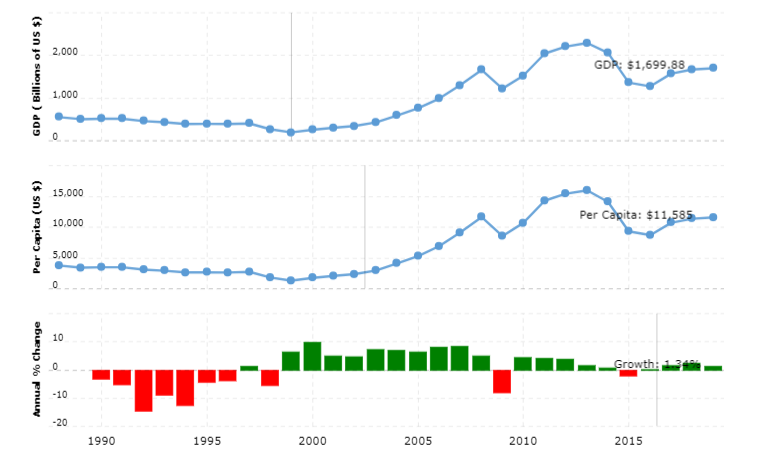
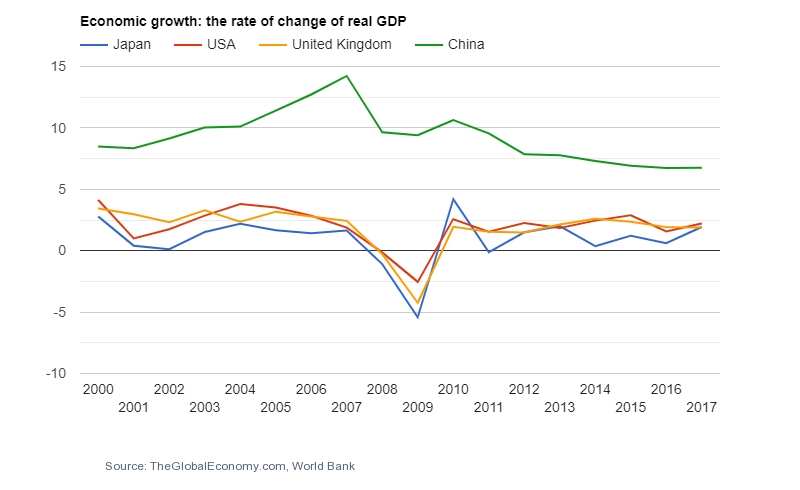
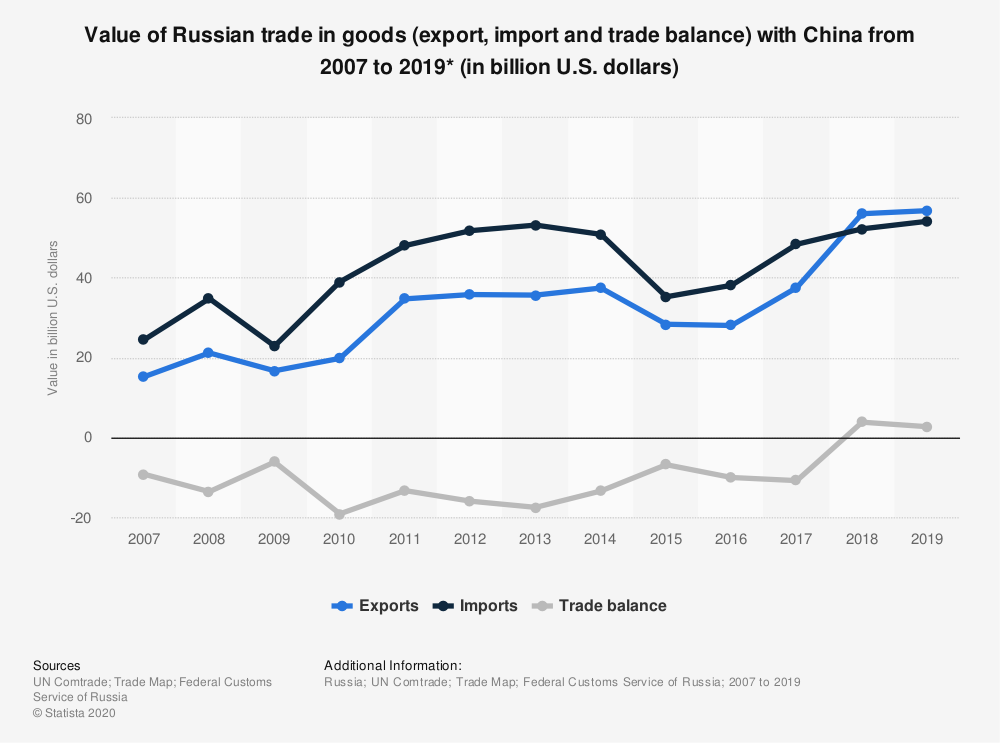
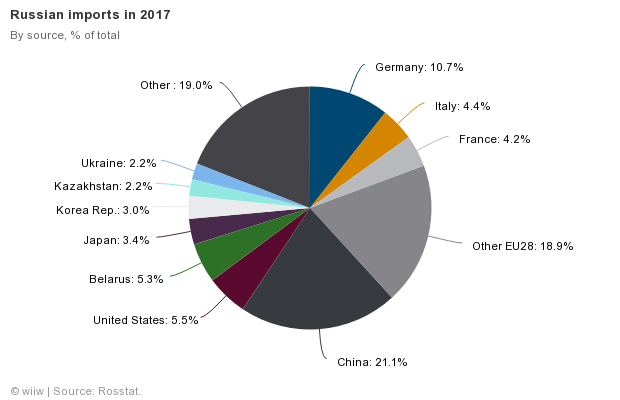
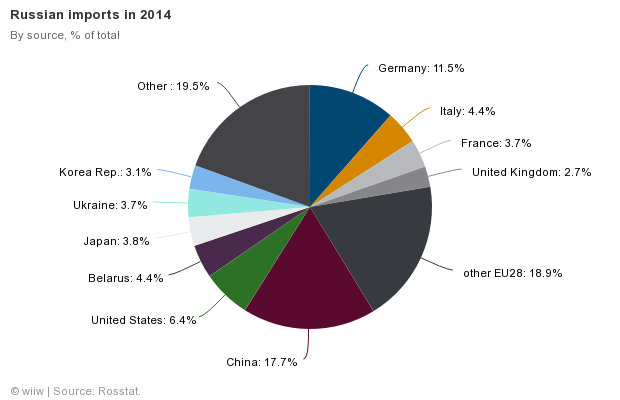
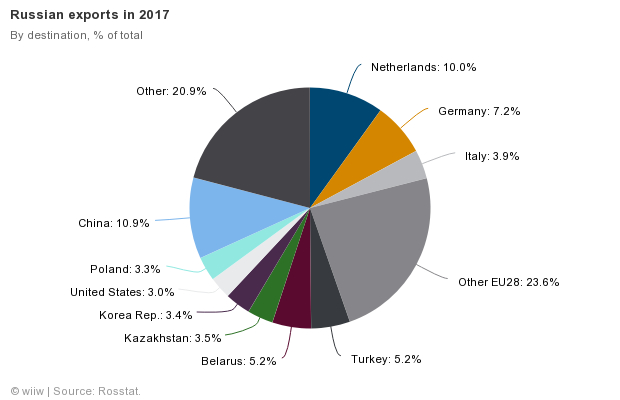

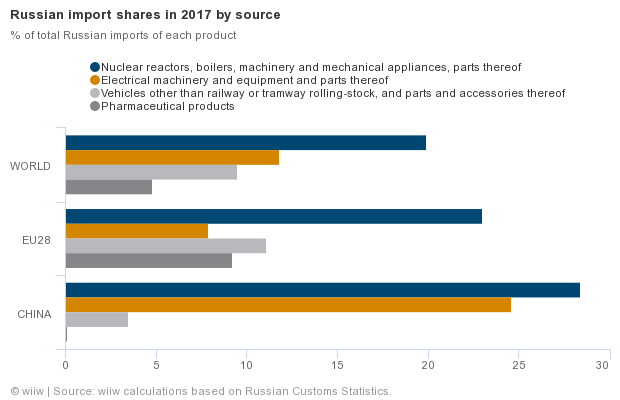
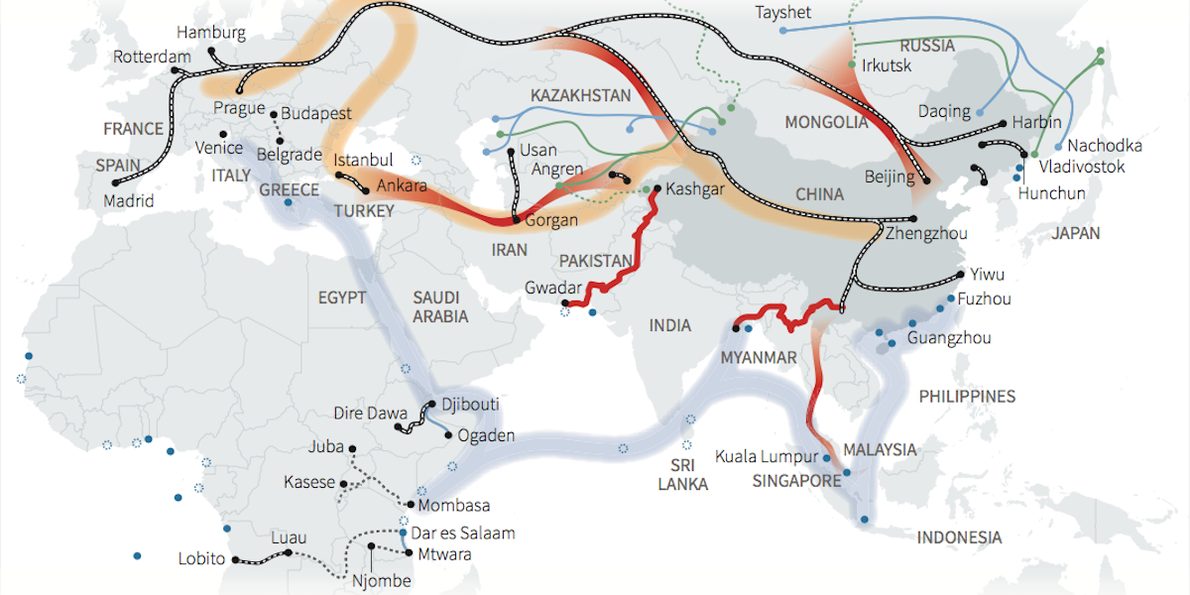
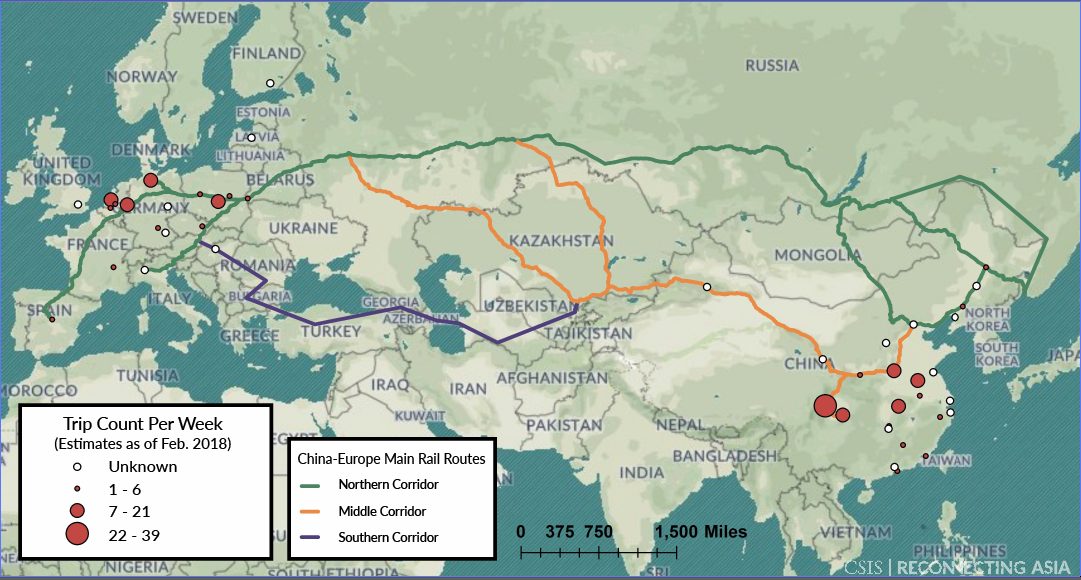
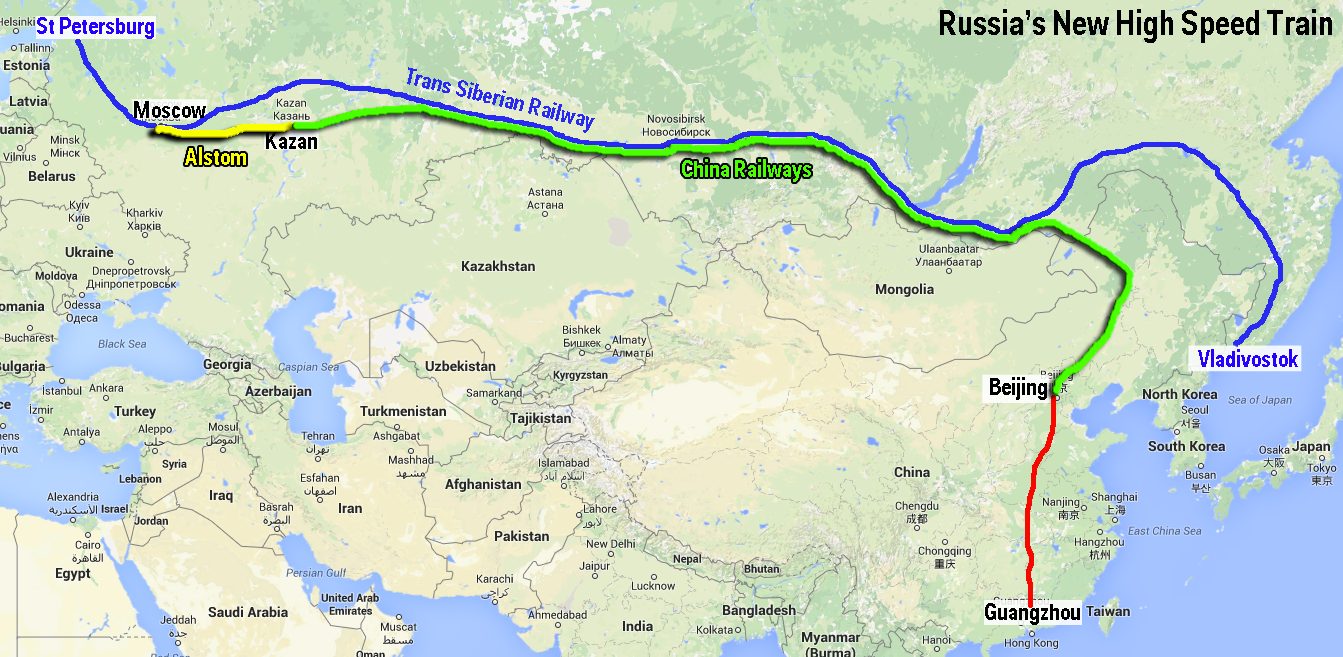
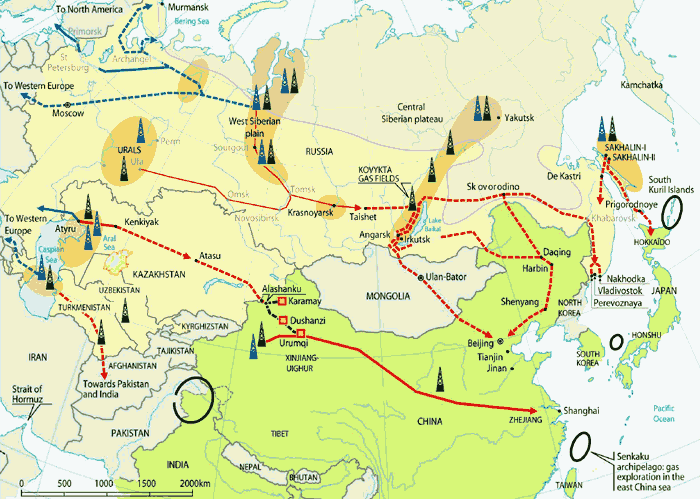
Congratulations to China !
Nothing is more rejoicing the New Silk Road …. !
It was Eurasia backbone during Millenniums … !
“Tell me what do you eat, I will tel you who you are”
Eurasia food is excellent everywhere … !
UK/US food is a disgusting plain disaster … !
Only successful for overweight, high-blood, diabetes, cancers … !
71% Of Military Age Americans Too Sick To Join, Study Says
https://www.naturalblaze.com/2018/03/71-percent-military-age-americans-too-sick-join.html
Pigs > Bats
And who domesticated the pig? Exactly.
Another pig. Duh
Pigs food fits for arrogant lousy noisy porks
China = biggest pork consumer
USA= BIGGEST PORK EXPORTER,NO SHT,SOMETHING THEY TRULY EXCELL!
Sounds fair
Humans who consume pigs stink, it is a medical fact.
It’s the same for all animals and humans,
they smell or taste what do they eat !
Spanish Patanegra is healthy from free range Porks….
Free range chicken and Eggs should be the rule,
as well as organic vegetables !
Hormones, antibiotic, pesticides, and fertilisers food
to eat more is plain madness !
Avoid processed food full of chemical sugar, salt and water
“Tell me what do you eat, I will tell you who you are”
Modern research proved microbiota is running the brain !
Saturnism(leaded blood) from water pipes is said at
the Roman Empire collapse origins !
Do Junk-Food overweight, high-blood, diabetes, cancers
will collapse the US ? ? ?
71% Of Military Age Americans Too Sick To Join, Study Says
https://www.naturalblaze.com/2018/03/71-percent-military-age-americans-too-sick-join.html
It’s the same for all animals and humans,
they smell or taste what do they eat !
You will not smell as a rose, if to eat roses.)
Guys, eat any meat (domestic animals and birds of course), it’s useful for your organism. Just eat not much. It’s fair for any food. Eating only vegetables or meat only – not healthy. And go to bath to prevent stinking, he-he.
Simpleton smell simpleton…. !
Until when do the US/Israeli Porks
will have a CARRION high hell stench ?
================================================
https://www.globalresearch.ca/does-us-military-assassinate-journalists-answer-yes/5720223
Censorship. Does the U.S. Military Assassinate Journalists?
By Robert Fantina
Global Research, August 04, 2020
Peace Data 3 August 2020
Region: USA
Theme: Intelligence, Law and Justice, Media Disinformation
As the cries of United States’ ‘exceptionalism’ are heard from the hallowed halls of Congress, one of the alleged hallmarks is freedom of the press. No nation, the breathless masses are told, protects press freedom like the United States. This belief is similar to Santa Claus: pleasant, comforting, but having no basis in truth.
The government only allows news to be reported that is favorable to the U.S.
Censorship has accompanied all its major wars, with the government actually writing articles for news outlets. Historian William Clayton Mullendore, in commenting on censorship during World War I, said: “…the idea of a ‘free’ press publishing government-authored articles is bound to raise red flags and illustrates how coordinated war propaganda was.”[1]
Three days after the U.S. joined World War II, the Office of Censorship was established, although it was six months before the so-called ‘Office of War Information’ came into being. President Franklin D. Roosevelt stated that
“All Americans abhor censorship, just as they abhor war. But the experience of this and of all other nations has demonstrated that some degree of censorship is essential in wartime….”[2]
There was little, if any, opposition to this by the press. “As in World War I, nearly every media outlet in the country stood squarely behind, or in fact became a partner with, the government in promoting its wartime requirements.”[3]
During the Korean War, President Harry S. Truman said, “that a propaganda agency was a creature of total war.”[4] Yet he issued a ‘gag order, prohibiting all government officials from making any public statements about ‘controversial’ foreign policy issues.[5]
These are just three examples among many that indicate the lack of free press in the United States.
In the twenty-first century, worse instances of censorship have been uncovered, including the murder of journalists by U.S. military members. At the World Economic Forum of 2005, CNN news chief Eason Jordan allegedly “…told the audience that U.S. forces had deliberately targeted journalists in Iraq. This charge is nothing new; journalists in other countries, especially colleagues of journalists killed by U.S. troops, have said this repeatedly. But in the United States corporate media, it is the job of people like Jordan to ignore such allegations.
To hear them instead echoed by a CNN official meant the rules of the game had been broken.”[6] While this was not the first time Jordan had made this accusation (he had done so in 2002 and 2004, and had also accused Israel of the same thing as early as 2002), this statement garnered more publicity. Jordan almost immediately tried to backtrack, saying his words were taken out of context, he had the utmost respect for the military (he had been embedded with them during the Iraq War), and basically said he never actually said the words attributed to him. The World Economic Forum refused to release a transcript of the conversation, which was videotaped, although several people present when Jordan spoke corroborated his statements. But all Jordan’s groveling was in vain, and he was forced to resign. The rules of U.S. censorship and propaganda must not be violated.
Memorial Day Is Based on a Lie
In 2004, the secretary of state at the time, Colin Powell visited Iraq on the first anniversary of the U.S. invasion of that country. As he entered the large dining hall to greet soldiers, many Arab journalists walked out in protest of the murder of two other Arab journalists by U.S. soldiers.
“Mr. Powell said he regretted the loss of life, but added he was certain the Americans did not kill the journalists on purpose.”[7]
The evidence that they did so is, at best, incriminating, if not overwhelming. “Al Arabiya employees say U.S. soldiers fired on a car carrying the TV crew, after another car ran through a checkpoint. Cameraman Ali Abdelaziz was killed immediately….”[8] News correspondent Ali al-Khatib died a short time later in the hospital. One wonders what the relevance of one car running a checkpoint had to do with the attack on a press vehicle in the same general area.
Yasser Salihee was an Iraqi journalist working for Knight Ridder, who covered a story about extra-judicial killings by U.S. soldiers in Iraq. Within a week of beginning their research, he and another journalist uncovered thirty cases of such killing by U.S.-supported and U.S.-trained Iraqi death squads.
“On June 24, while Salihee’s article was in press, a U.S. military sniper killed him…”[9] in the same manner that many of the thirty victims he’d uncovered had died: a single shot to the head.
A statement from Knight-Ridder following this assassination said this:
“’There’s no reason to think that the shooting had anything to do with his reporting work.’ Such disclaimers seem to be a de facto mandate these days. When an investigative report is shot dead by a member of an organization he or she is investigating, there’s a clear rationale for suspicion.”[10]
How many such murders occur? Journalist Michael I. Niman said the following:
“Eason’s comment cost him his job – and no genuflecting to the god of disclaimers and apologies could save it. He resigned. The problem was that he was right. I also looked at the Reporters Without Borders investigation into the deaths of two journalists killed by U.S. troops in Baghdad, and at other subsequently confirmed killings of journalists by U.S. forces in Afghanistan, Iraq and Serbia – showing how U.S. military documentation offers evidence that many of these dead journalist were in fact deliberately targeted by U.S. forces.”[11]
Freedom of the press, like many other alleged freedoms within the United States, is a myth; corporate-owned media outlets report what the government tells them to report since government officials and corporate executives all benefit financially by repeating government lies. And when journalists get too close to the truth, eliminating them is not too extreme a measure to take. Rather then let the populace know that U.S. soldiers are torturing and executing innocent, defenseless people, kill those who report such atrocities. This eliminates the current problem and serves as a warning to other journalists.
Freedoms in the U.S. are as illusionary as its exceptionalism. Like a magician distracting the audience from one thing while he does something else to indicate ‘magic’, U.S. government spokespeople repress real news, and proclaim that the U.S. is the greatest country in the world. Nothing could be further from the truth.
*
Note to readers: please click the share buttons above or below. Forward this article to your email lists. Crosspost on your blog site, internet forums. etc.
Robert Fantina is an activist and journalist, working for peace and social justice. A U.S. citizen, he moved to Canada shortly after the 2004 presidential election, and now holds dual citizenship. He serves on the boards of Canadians for Palestinian Rights, and Canadians for Justice in Kashmir, and is the former Canadian Coordinator of World Beyond War. He has written the books Propaganda, Lies, and False Flags: How the U.S. Justifies its Wars.; Empire, Racism and Genocide: A History of U.S. Foreign Policy and Occupied Palestine: Israel, the U.S. and International Law. He is a frequent contributor to Global Research.
Notes
[1] Celia Malone Kingsbury, For Home and Country: World War I Propaganda on the Home Front (Lincoln, NE: University of Nebraska Press, 2010), 35.
[2] Ross F. Collins and Patrick S. Washburn, The Greenwood Library of American War Reporting, Volume 5: World War I and World War II (Westport, CT., Greenwood Press, 2005) 250 (referenced in Children, War and Propaganda’, page 32).
[3] Ross F. Collins, Children, War and Propaganda. (Peter Lange, Inc., 2011).
[4] Steven Case, Selling the Korean War: Propaganda, Politics, and Public Opinion in the Untied states, 1950 – 1953 (New York: Oxford University Press, 2008),
[5] Ibid, 218 – 219.
[6] Michael I. Niman, “Truth, Death, and Journalism: We Kill Journalists, Don’t We?” The Humanist, May-June 2005.
[7] “Powell Surprise Visit Greeted by Hostile Reporters; Journalists Protest Deaths of Two Colleagues,” The Washington Times (Washington, DC), March 20, 2004.
[8] Ibid.
[9] Michael I. Niman, “We Kill Journalists: Part Two in an Unfortunately Continuing Series,” The Humanist, September-October 2005.
[10] Ibid.
[11] Ibid.
Featured image is by duncan c / CC BY-NC 2.0
The original source of this article is Peace Data
Copyright © Robert Fantina, Peace Data, 2020
yummy pork. Salt pork and beans. Pork stir fries, baked hams, and of course sausages.
yum flucking yum.
I am only 2 out of those 3 traits you provided.
I grow a free range pork couple in the wild eating mostly any
kind of fruits, nuts, roots and cook potatoes for complements
The meat had a unknown taste…. !
Any charcuteries has to be avoided, it’s a scandalous food
full of preservatives and chemicals, more unhealthy can’t be !
The taste isn’t a reference, processed food is always a
criminal quality !
Sausages is often 10% unsalable fat, 10% unsalable meat,
10% salt, sugar & spices, 70% water !
Charcuteries is best food for cancers and high-blood…
Quality charcuterie is almost inexistant…
Dry bacon with herbs is delicious !
UK bread – that really gets me.. I get they mechanised manufacture through the Chorleywood process, but you would have hoped they would have had at least some artisan skill to remain.
Any country in Europe, from Portugal to even Poland and Russia, makes some varieties of breads that are tasty. This is just not the case for the UK!
I have been in HK, China, Korea, Japan, South East Asia,
Burma, India, 6 months a Year during 30 Years.
Europe best is Holland, Switzerland, but HK is the World best !
Italy, France, Germany, Austria, Scandinavia have some
advantages…Middle East Turkey is good too….
US/UK Junk-Food is awful,
discrimination/racism/fascism isn’t my cup of tea,
only museum are good….
Moscow is good too…
You congratulate a dictatorship. I hope god forgives me as I’m cleaving your head from your shoulders. Freedom is worth fighting for. .
For the moment the World worst dictatorship ,
genocides champion, with most jailed and tortured peoples
is the US Empire and Country ! ! !
The last 60 years I do have lived in 60 Countries,
the US were the most unpleasant for me,
but I know only the East cost….
I despise hormones & Antibiotic ugh Steak and ugh cars
loved by rude and overweight sick Simpleton !
I am a rich blond Protestant Caucasian from Switzerland !
If I will have been poor and coloured, maybe killed ……
Used to have had a penthouse in China during 12 years,
and love it… !
Have you been there, or do you only know
rubbish Fox News propaganda, or awfully repugnant EC mainstream Merdias ?
===============================================
From 1945 until today – 20 to 30 million people killed by the USA
by Manlio Dinucci
It’s a fact, not an analysis, not even an opinion – the « free and open international order» promoted since 1945 by the United States has cost the lives of 20 to 30 million people throughout the world. No President, whoever he may be, has managed to slow the rhythm of this killing machine.
VOLTAIRE NETWORK | ROME (ITALY) | 20 NOVEMBER 2018
ČEŠTINA DEUTSCH ESPAÑOL FRANÇAIS ITALIANO NORSK PORTUGUÊS ROMÂNĂ TÜRKÇE
https://www.voltairenet.org/article204021.html
In the summary of its last strategic document – 2018 National Defense Strategy of the United States of America (of which the entire text is classified) – the Pentagon claims that « after the Second World War, the United States and their allies installed a « free and open international order in order to safeguard the freedom of the people from aggression and coercion », but that « this order is presently undermined by Russia and China, who are violating the principles and rules of international relations ». This is a total reversal of historical reality.
Professor Michel Chossudovsky, director of the Center for Research on Globalization, reminds us that these two countries, listed today as enemies, are those which, when they were allied with the United States during the Second World War, paid the victory over the Nazi-fascist Axis Berlin-Rome-Tokyo with the greatest price in human lives – approximately 26 million from the Soviet Union and 20 million from China, compared with a little more than 400,000 from the United States.
With this preliminary, Chossudovsky introduces to Global Research a documented study by James A. Lucas on the number of people killed by the uninterrupted series of wars, coups d’État and other subversive operations executed by the United States from the end of the War in 1945 until now – a number estimated at 20 to 30 million victims [1]. Approximately twice the number of deaths from the First World War, the centenary of the end of which has just been celebrated in Paris with a Peace Forum.
Apart from the deaths, there are the wounded, who very often find themselves crippled for life – some experts calculate that for every person killed in war, ten others are wounded. This means that the number of people wounded by US wars should be counted in the hundreds of millions.
To this estimation in the study we must add a non-quantified number of dead, probably hundreds of millions, which have been caused, from 1945 until today, by the indirect effects of wars – famine, epidemics, forced migrations, slavery and exploitation, environmental damage, subtraction of resources from vital needs in order to cover military expenditure.
The study documents the wars and coups d’État executed by the United States in 30 Asian, African, European and Latin-American countries. It reveals that US military forces are directly responsible for between 10 and 15 million deaths, caused by the major wars – those against Korea and Vietnam and the two wars against Iraq. Between 10 and 14 million other deaths have been caused by the proxy wars waged by the allied armed forces trained and commanded by the USA in Afghanistan, Angola, Congo, Sudan, Guatemala and other countries.
The Vietnam War, which spread to Cambodia and Laos, caused a number of deaths estimated at 7.8 million (plus a huge number of wounded, and genetic damage affecting generations due to the dioxin sprayed by US aircraft).
The proxy war of the 1980’s in Afghanistan was organised by the CIA, which trained and armed – with the collaboration of Oussama ben Laden and Pakistan – more than 100,000 mujahideen to fight the Soviet troops who had fallen into the « Afghan trap » (as it was later described by Zbigniew Brzezinski, specifying that the training of the mujahideen had begun in July 1979, five months before the Soviet intervention in Afghanistan).
The bloodiest coup d’État was organised in 1965 in Indonesia by the CIA – it handed over the list of the first 5,000 Communists and others marked for death to the Indonesian murder squads. The number of people assassinated is estimated at between 500,000 and 3 million.
That is the « free and open international order » that the United States, independently of the White House, persist in pursuing in order to « safeguard the people from aggression and coercion ».
Manlio Dinucci
https://www.voltairenet.org/article204021.html
US/Israeli/NATO smell freedom Wormy Carrion
=========================================
Censorship. Does the U.S. Military Assassinate Journalists?
https://www.globalresearch.ca/does-us-military-assassinate-journalists-answer-yes/5720223
By Robert Fantina
Global Research, August 04, 2020
Peace Data 3 August 2020
Region: USA
Theme: Intelligence, Law and Justice, Media Disinformation
As the cries of United States’ ‘exceptionalism’ are heard from the hallowed halls of Congress, one of the alleged hallmarks is freedom of the press. No nation, the breathless masses are told, protects press freedom like the United States. This belief is similar to Santa Claus: pleasant, comforting, but having no basis in truth.
The government only allows news to be reported that is favorable to the U.S.
Censorship has accompanied all its major wars, with the government actually writing articles for news outlets. Historian William Clayton Mullendore, in commenting on censorship during World War I, said: “…the idea of a ‘free’ press publishing government-authored articles is bound to raise red flags and illustrates how coordinated war propaganda was.”[1]
Three days after the U.S. joined World War II, the Office of Censorship was established, although it was six months before the so-called ‘Office of War Information’ came into being. President Franklin D. Roosevelt stated that
“All Americans abhor censorship, just as they abhor war. But the experience of this and of all other nations has demonstrated that some degree of censorship is essential in wartime….”[2]
There was little, if any, opposition to this by the press. “As in World War I, nearly every media outlet in the country stood squarely behind, or in fact became a partner with, the government in promoting its wartime requirements.”[3]
During the Korean War, President Harry S. Truman said, “that a propaganda agency was a creature of total war.”[4] Yet he issued a ‘gag order, prohibiting all government officials from making any public statements about ‘controversial’ foreign policy issues.[5]
These are just three examples among many that indicate the lack of free press in the United States.
In the twenty-first century, worse instances of censorship have been uncovered, including the murder of journalists by U.S. military members. At the World Economic Forum of 2005, CNN news chief Eason Jordan allegedly “…told the audience that U.S. forces had deliberately targeted journalists in Iraq. This charge is nothing new; journalists in other countries, especially colleagues of journalists killed by U.S. troops, have said this repeatedly. But in the United States corporate media, it is the job of people like Jordan to ignore such allegations.
To hear them instead echoed by a CNN official meant the rules of the game had been broken.”[6] While this was not the first time Jordan had made this accusation (he had done so in 2002 and 2004, and had also accused Israel of the same thing as early as 2002), this statement garnered more publicity. Jordan almost immediately tried to backtrack, saying his words were taken out of context, he had the utmost respect for the military (he had been embedded with them during the Iraq War), and basically said he never actually said the words attributed to him. The World Economic Forum refused to release a transcript of the conversation, which was videotaped, although several people present when Jordan spoke corroborated his statements. But all Jordan’s groveling was in vain, and he was forced to resign. The rules of U.S. censorship and propaganda must not be violated.
Memorial Day Is Based on a Lie
In 2004, the secretary of state at the time, Colin Powell visited Iraq on the first anniversary of the U.S. invasion of that country. As he entered the large dining hall to greet soldiers, many Arab journalists walked out in protest of the murder of two other Arab journalists by U.S. soldiers.
“Mr. Powell said he regretted the loss of life, but added he was certain the Americans did not kill the journalists on purpose.”[7]
The evidence that they did so is, at best, incriminating, if not overwhelming. “Al Arabiya employees say U.S. soldiers fired on a car carrying the TV crew, after another car ran through a checkpoint. Cameraman Ali Abdelaziz was killed immediately….”[8] News correspondent Ali al-Khatib died a short time later in the hospital. One wonders what the relevance of one car running a checkpoint had to do with the attack on a press vehicle in the same general area.
Yasser Salihee was an Iraqi journalist working for Knight Ridder, who covered a story about extra-judicial killings by U.S. soldiers in Iraq. Within a week of beginning their research, he and another journalist uncovered thirty cases of such killing by U.S.-supported and U.S.-trained Iraqi death squads.
“On June 24, while Salihee’s article was in press, a U.S. military sniper killed him…”[9] in the same manner that many of the thirty victims he’d uncovered had died: a single shot to the head.
A statement from Knight-Ridder following this assassination said this:
“’There’s no reason to think that the shooting had anything to do with his reporting work.’ Such disclaimers seem to be a de facto mandate these days. When an investigative report is shot dead by a member of an organization he or she is investigating, there’s a clear rationale for suspicion.”[10]
How many such murders occur? Journalist Michael I. Niman said the following:
“Eason’s comment cost him his job – and no genuflecting to the god of disclaimers and apologies could save it. He resigned. The problem was that he was right. I also looked at the Reporters Without Borders investigation into the deaths of two journalists killed by U.S. troops in Baghdad, and at other subsequently confirmed killings of journalists by U.S. forces in Afghanistan, Iraq and Serbia – showing how U.S. military documentation offers evidence that many of these dead journalist were in fact deliberately targeted by U.S. forces.”[11]
Freedom of the press, like many other alleged freedoms within the United States, is a myth; corporate-owned media outlets report what the government tells them to report since government officials and corporate executives all benefit financially by repeating government lies. And when journalists get too close to the truth, eliminating them is not too extreme a measure to take. Rather then let the populace know that U.S. soldiers are torturing and executing innocent, defenseless people, kill those who report such atrocities. This eliminates the current problem and serves as a warning to other journalists.
Freedoms in the U.S. are as illusionary as its exceptionalism. Like a magician distracting the audience from one thing while he does something else to indicate ‘magic’, U.S. government spokespeople repress real news, and proclaim that the U.S. is the greatest country in the world. Nothing could be further from the truth.
*
Note to readers: please click the share buttons above or below. Forward this article to your email lists. Crosspost on your blog site, internet forums. etc.
Robert Fantina is an activist and journalist, working for peace and social justice. A U.S. citizen, he moved to Canada shortly after the 2004 presidential election, and now holds dual citizenship. He serves on the boards of Canadians for Palestinian Rights, and Canadians for Justice in Kashmir, and is the former Canadian Coordinator of World Beyond War. He has written the books Propaganda, Lies, and False Flags: How the U.S. Justifies its Wars.; Empire, Racism and Genocide: A History of U.S. Foreign Policy and Occupied Palestine: Israel, the U.S. and International Law. He is a frequent contributor to Global Research.
Notes
[1] Celia Malone Kingsbury, For Home and Country: World War I Propaganda on the Home Front (Lincoln, NE: University of Nebraska Press, 2010), 35.
[2] Ross F. Collins and Patrick S. Washburn, The Greenwood Library of American War Reporting, Volume 5: World War I and World War II (Westport, CT., Greenwood Press, 2005) 250 (referenced in Children, War and Propaganda’, page 32).
[3] Ross F. Collins, Children, War and Propaganda. (Peter Lange, Inc., 2011).
[4] Steven Case, Selling the Korean War: Propaganda, Politics, and Public Opinion in the Untied states, 1950 – 1953 (New York: Oxford University Press, 2008),
[5] Ibid, 218 – 219.
[6] Michael I. Niman, “Truth, Death, and Journalism: We Kill Journalists, Don’t We?” The Humanist, May-June 2005.
[7] “Powell Surprise Visit Greeted by Hostile Reporters; Journalists Protest Deaths of Two Colleagues,” The Washington Times (Washington, DC), March 20, 2004.
[8] Ibid.
[9] Michael I. Niman, “We Kill Journalists: Part Two in an Unfortunately Continuing Series,” The Humanist, September-October 2005.
[10] Ibid.
[11] Ibid.
https://www.globalresearch.ca/does-us-military-assassinate-journalists-answer-yes/5720223
First off, you profess a beLIEF in a god. You also threaten to chop off heads, because people reject your characterizations, beLIEfs, and ad hom.
Then you talk about freedom, while you are just an ignorant , impotent, slave. A stupid slave.
China is respected and successful as it follows win-win partnerships that benefit all its friends. US is greedy and destructive and hated by most nations and has no friends.
interesting curves:
Russia’s total GDP and growth rate since 1989
nice correlation between decline of russian gdp after sanctions of Eu and USA. end of tales about russian independence on wetern technology and capital. :P
Keep dreaming Trollstoy.
Decline of DGP is just in dollars, because local currency has collapsed in half (2 times), “thanks” to liberal economists from the Central bank. They have all reserves to carry ANY course, but did nothing to support it.
The same with Russia-China trade in dollars. If count in tonnes, there is no drop. Real decline is about 2-3% in 2014-15.
Russia is not an independent country, the Jews control it.
oligarchs
CIA idiot–Russia now the 5th largest economy with vast reserves—-US= 2nd largest and declining w 25 trillion$ debt
russia is not within 10 best economies.
russia is onlevel of italy. leaf in the wind …
Chinese are going to lose big in long term.It may seem like they are winning but after some years the tables re going to turn against China and it’s gonna get destroyed.
China & Iran is 6’000 Years extraordinary continuity !
Georges Clemenceau said:
“The US went out Barbarism to jump into Decadence
without to pass by Civilisation ! “
This is a Trojan horse. If we don’t act the devil will hold our soles
List of Israeli Targets Leaked: Tel Aviv Fears the Worst in ICC Investigation of War Crimes
https://www.counterpunch.org/2020/07/31/list-of-israeli-targets-leaked-tel-aviv-fears-the-worst-in-icc-investigation-of-war-crimes/
by RAMZY BAROUD FacebookTwitterRedditEmail
When International Court of Justice (ICC) Prosecutor, Fatou Bensouda, confirmed last December that the Court has ample evidence to pursue a war crimes investigation in occupied Palestine, the Israeli government responded with the usual rhetoric, accusing the international community of bias and insisting on Israel’s ‘right to defend itself.’
Beneath the platitudes and typical Israeli discourse, the Israeli government knew too well that an ICC investigation into war crimes in Palestine could be quite costly. An investigation, in itself, represents an indictment of sorts. If Israeli individuals were to be indicted for war crimes, that is a different story, as it becomes a legal obligation of ICC members to apprehend the criminals and hand them over to the Court.
Israel remained publicly composed, even after Bensouda, last April, elaborated on her December decision with a 60-page legal report, titled: “Situation in the State of Palestine: Prosecution Response to the Observations of Amici Curiae, Legal Representatives of Victims, and States.”
In the report, the ICC addressed many of the questions, doubts and reports submitted or raised in the four months that followed her earlier decision. Countries such as Germany and Austria, among others, had used their position as amici curiae – ‘friends of the court’ – to question the ICC jurisdiction and the status of Palestine as a country.
Bensouda insisted that “the Prosecutor is satisfied that there is a reasonable basis to initiate an investigation into the situation in Palestine under article 53(1) of the Rome Statute, and that the scope of the Court’s territorial jurisdiction comprises the West Bank, including East Jerusalem, and Gaza (“Occupied Palestinian Territory”).”
However, Bensouda did not provide definitive timelines to the investigation; instead, she requested that the ICC’S Pre-Trial Chamber “confirm the scope of the Court’s territorial jurisdiction in Palestine,” an additional step that is hardly required since the State of Palestine, a signatory of the Rome Statute, is the one that actually referred the case directly to the Prosecutor’s office.
The April report, in particular, was the wake-up call for Tel Aviv. Between the initial decision in December till the release of the latter report, Israel lobbied on many fronts, enlisting the help of ICC members and recruiting its greatest benefactor, Washington – which is not an ICC member – to bully the Court so it may reverse its decision.
On May 15, US Secretary of State, Mike Pompeo, warned the ICC against pursuing the investigation, targeting Bensouda, in particular, for her decision to hold war criminals in Palestine accountable.
The US slapped unprecedented sanctions against the ICC on June 11, with President Donald Trump issuing an ‘executive order’ that authorizes the freezing of assets and a travel ban against ICC officials and their families. The order also allows for the punishing of other individuals or entities that assist the ICC in its investigation.
Washington’s decision to carry out punitive measures against the very Court that was established for the sole purpose of holding war criminals accountable is both outrageous and abhorrent. It also exposes Washington’s hypocrisy – the country that claims to defend human rights is attempting to prevent legal accountability by those who have violated human rights.
Upon its failure to halt the ICC legal procedures regarding its investigation of war crimes, Israel began to prepare for the worst. On July 15, Israeli daily newspaper, Haaretz, reported about a ‘secret list’ that was drawn up by the Israeli government. The list includes “between 200 and 300 officials”, ranging from politicians to military and intelligence officials, who are subject to arrest abroad, should the ICC officially open the war crimes investigation.
Names begin at the top of the Israeli political pyramid, among them Prime Minister Benjamin Netanyahu and his current coalition partner, Benny Gantz.
The sheer number of Israeli officials on the list is indicative of the scope of the ICC’s investigation, and, somehow, is a self-indictment, as the names include former Israeli Defense Ministers – Moshe Ya’alon, Avigdor Lieberman and Naftali Bennett; current and former army chiefs of staffs – Aviv Kochavi, Benny Gantz and Gadi Eisenkot and current and former heads of internal intelligence, the Shin Bet – Nadav Argaman and Yoram Cohen.
Respected international human rights organizations have already, repeatedly, accused all these individuals of serious human rights abuses during Israel’s lethal wars on the besieged Gaza Strip, starting with the so-called ‘Operation Cast Lead’ in 2008-9.
But the list is far more extensive, as it covers “people in much more junior positions, including lower-ranking military officers and, perhaps, even officials involved in issuing various types of permits to settlements and settlement outposts.”
Israel, thus, fully appreciates the fact that the international community still insists that the construction of illegal colonies in occupied Palestine, the ethnic cleansing of Palestinians and the transfer of Israeli citizens to occupied land are all inadmissible under international law and tantamount to war crimes. Netanyahu must be disappointed to learn that all of Washington’s concessions to Israel under Trump’s presidency have failed to alter the position of the international community and the applicability of international law in any way.
Furthermore, it would not be an exaggeration to argue that Tel Aviv’s postponement of its plan to illegally annex nearly a third of the West Bank is directly linked to the ICC’s investigation, for the annexation would have completely thwarted Israel’s friends’ efforts aimed at preventing the investigation from ever taking place.
While the whole world, especially Palestinians, Arabs and their allies, still anxiously await the final decision by the Pre-Trial Chamber, Israel will continue its overt and covert campaign to intimidate the ICC and any other entity that aims to expose Israeli war crimes and to try Israeli war criminals.
Washington, too, will continue to strive to ensure Netanyahu, Gantz, and the “200 to 300” other Israeli officials never see their day in court.
However, the fact that a “secret list” exists is an indication that Tel Aviv understands that this era is different and that international law, which has failed Palestinians for over 70 years, may, for once, deliver, however a small measure of justice.
Join the debate on Facebook
More articles by:RAMZY BAROUD
Ramzy Baroud is a journalist and the Editor of The Palestine Chronicle. He is the author of five books. His latest is “These Chains Will Be Broken: Palestinian Stories of Struggle and Defiance in Israeli Prisons” (Clarity Press, Atlanta). Dr. Baroud is a Non-resident Senior Research Fellow at the Center for Islam and Global Affairs (CIGA), Istanbul Zaim University (IZU). His website is http://www.ramzybaroud.net.
https://www.counterpunch.org/2020/07/31/list-of-israeli-targets-leaked-tel-aviv-fears-the-worst-in-icc-investigation-of-war-crimes/.
The devil is always biting at our soles, what counts is who hold the soul in our heart.
What makes you think the US/UK 1 % is any more compassionate than the Chinese 1%.
The US/UK governments pushed the ‘lockdown’ response to Sars 2, not China.
The US also created the Covid 19.
as USA devolves into chaos world leading violent/non violent crime, obesity, mental illness, stupidity and poverty where 2 million families live in extreme poverty there is none in China or Russia….gdp explains little, ppp more…however this is most important for the people that worship money—amerikans…these status anxious barbarians believe freedom is the choice between coke and Pepsi and culture is reading children’s comic books